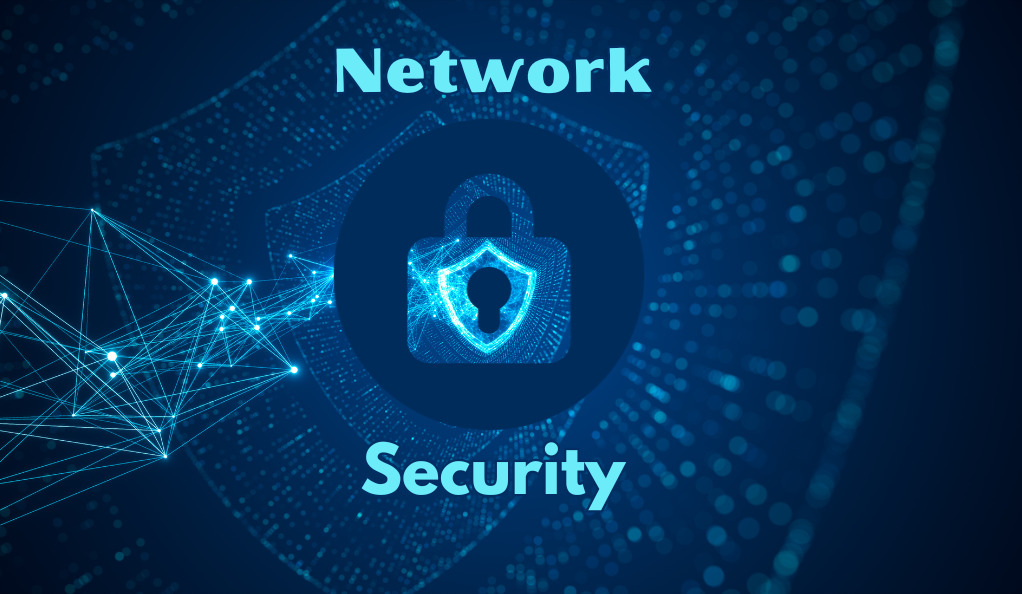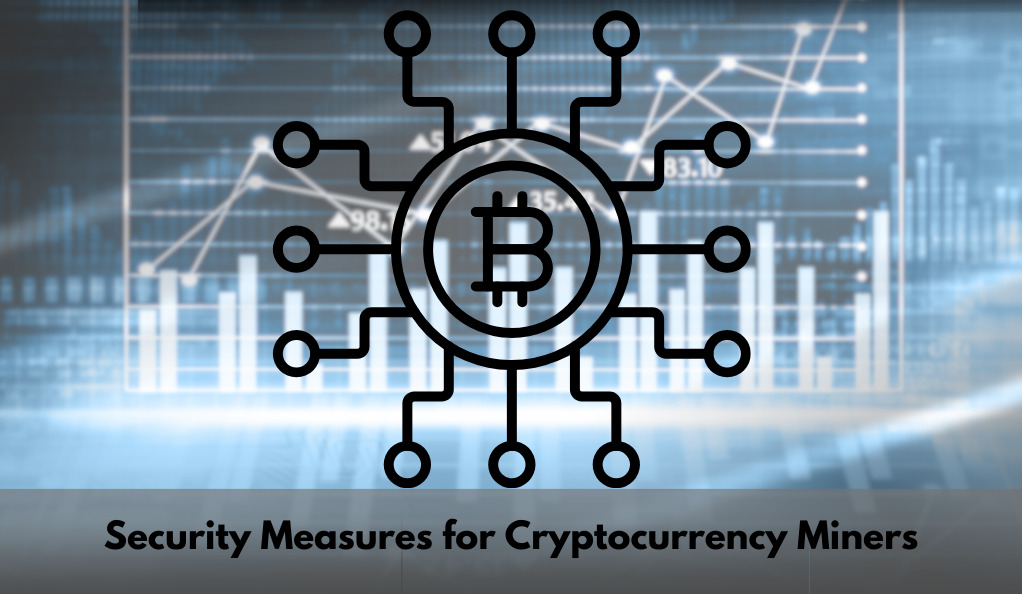In the digital age, cryptocurrency has emerged as a revolutionary form of decentralized currency, reshaping the way we perceive and handle money. At the heart of this transformation is the process of cryptocurrency mining, a computational task that validates and records transactions on a blockchain. While the rewards of mining can be lucrative, the process is not without its challenges, chief among them being security.
Why is Security Crucial in Cryptocurrency Mining?
Cryptocurrency, by its very nature, is a digital asset. This means that, unlike traditional assets, it’s susceptible to a unique set of threats that can compromise its value and integrity. Miners, as the backbone of the cryptocurrency network, play a pivotal role in maintaining the security and trustworthiness of the entire system. A breach in a miner’s security can have cascading effects, potentially destabilizing an entire cryptocurrency network.
Understanding the Threat Landscape
Before diving into the protective measures, it’s essential to grasp the vast and evolving threat landscape that cryptocurrency miners face. By understanding these threats, miners can better prepare and defend their operations.
Common Threats Faced by Miners
- 51% Attacks: One of the most talked-about threats in the cryptocurrency world, a 51% attack occurs when a single miner or mining pool controls over 50% of the network’s mining power. This dominance allows them to double-spend coins, halt transactions, and even rewrite transaction history.
- Malware and Ransomware: Malicious software can infiltrate mining operations, hijacking mining power, stealing cryptocurrency, or locking out users until a ransom is paid.
- Phishing Attacks: Cybercriminals often use deceptive emails or websites to trick miners into revealing sensitive information, like wallet keys or login credentials.
- Physical Theft: Beyond the digital realm, miners also face the risk of physical theft. High-value mining equipment can be a target for burglars.
- Man-in-the-Middle Attacks: Here, attackers intercept and potentially alter the communication between two parties without their knowledge, which can lead to data theft or fraudulent transactions.
Real-world Examples of Security Breaches in Mining Operations
- In 2018, a prominent cryptocurrency exchange faced a massive security breach, leading to the theft of over $500 million worth of digital assets. While not a direct attack on miners, it underscores the lucrative nature of cyber-attacks in the crypto realm.
- Several mining pools have faced Distributed Denial of Service (DDoS) attacks, where attackers flood the network with traffic, causing disruptions and potential financial losses.
- Individual miners have reported cases where malware was unknowingly installed on their systems, redirecting their mining rewards to anonymous wallets.
The Ever-evolving Nature of Threats
It’s crucial to note that as technology and security measures advance, so do the tactics employed by cybercriminals. What might be considered a robust security measure today could be rendered obsolete tomorrow. This dynamic nature of threats underscores the importance of staying informed and continually updating security protocols.
Physical Security Measures

While the digital realm is rife with threats, the tangible, physical world presents its own set of challenges for cryptocurrency miners. Ensuring the safety of mining hardware is paramount, not just from a financial perspective but also to maintain uninterrupted mining operations.
Securing Mining Hardware from Theft or Damage
- Location Selection: Choose a location that’s both discreet and secure. Avoid broadcasting the presence of valuable mining equipment, especially if mining from a residential location.
- Access Control: Implement biometric or card-based access systems to ensure only authorized personnel can access the mining rigs. This is especially crucial for larger mining farms.
- Surveillance: Install CCTV cameras in and around the mining area. Ensure they cover all entry and exit points and are equipped with night vision.
- Alarm Systems: Equip your mining facility with burglar alarms. Modern systems can notify the owner or security services in real-time if an intrusion is detected.
Importance of Location and Environment for Mining Rigs
- Climate Control: Mining equipment generates significant heat. Ensure the location has adequate cooling solutions, like air conditioning or ventilation systems, to prevent hardware damage.
- Fire Safety: Due to the high power consumption, there’s a risk of electrical fires. Install fire alarms and have fire extinguishers readily available. For larger setups, consider automatic sprinkler systems.
- Backup Power: Invest in uninterruptible power supplies (UPS) to keep the rigs running during power outages. This not only ensures continuous mining but also prevents potential hardware damage from sudden power cuts.
Surveillance and Monitoring Solutions
- Remote Monitoring: Modern surveillance systems allow owners to monitor their mining operations remotely via smartphones or computers. This provides peace of mind and immediate response capability.
- Motion Sensors: These can be installed to detect unauthorized movement, especially during non-operational hours.
- Security Personnel: For larger mining farms, hiring security personnel can be a worthwhile investment. They can conduct regular patrols and respond immediately to any security breaches.
Digital Security Protocols
The digital domain is where most of the action happens for cryptocurrency miners. As such, it’s also where they’re most vulnerable. Implementing robust digital security protocols is not just advisable; it’s imperative.
Using Secure and Updated Mining Software
- Trusted Sources: Always download mining software from reputable sources. Avoid third-party websites or links from unverified emails.
- Regular Updates: Developers frequently release updates to patch known vulnerabilities. Ensure your mining software is always up-to-date.
- Open-Source Preference: Whenever possible, opt for open-source mining software. The transparency allows for community vetting, often making these solutions more secure.
Importance of Firewalls and Intrusion Detection Systems
- Firewalls: These act as barriers between your mining operation and potential threats from the internet. Configure your firewall to only allow necessary traffic and block everything else.
- Intrusion Detection Systems (IDS): IDS monitor network traffic for suspicious activity. If detected, they can alert the user or take predefined actions, like blocking the source of the suspicious traffic.
- Regular Log Reviews: Periodically review system and network logs. Unusual activity, like unexpected outbound connections, can be early indicators of a breach.
Regular Software Audits and Vulnerability Assessments
- Hire Experts: Consider hiring cybersecurity experts to conduct regular audits of your mining setup. They can identify potential vulnerabilities and recommend fixes.
- Penetration Testing: This involves simulating cyber-attacks on your system to identify weak points. It’s a proactive approach to discover and rectify vulnerabilities before malicious actors can exploit them.
- Stay Informed: Join online forums, communities, and news platforms dedicated to cryptocurrency mining. Being part of a community can keep you updated on the latest threats and solutions.
Wallet Security and Safe Storage
- Cold vs. Hot Wallets: While hot wallets (connected to the internet) offer convenience, cold wallets (offline storage) provide superior security. For significant amounts of cryptocurrency, consider using cold storage solutions.
- Encrypted Backups: Regularly back up your wallet data. Ensure these backups are encrypted and stored in multiple secure locations.
- Multi-Signature Wallets: These require multiple private keys to authorize a transaction, adding an extra layer of security. Even if a malicious actor gains access to one key, they can’t move your funds without the other keys.
Network Security Enhancements

In the interconnected world of cryptocurrency mining, the network is the lifeline. It facilitates everything from the actual mining process to the transfer of mined coins. Given its centrality, ensuring its security is of paramount importance.
VPNs and Their Role in Masking and Securing Miner’s IP Addresses
- Anonymity: VPNs (Virtual Private Networks) mask your IP address, making it difficult for potential attackers to target your mining operations directly.
- Encrypted Traffic: VPNs encrypt your internet traffic, ensuring that even if someone intercepts it, they can’t decipher the contents.
- Server Selection: Opt for VPN providers that offer a wide range of servers. Switching between servers can further enhance security and reduce the risk of DDoS attacks.
Securing Local Networks and Using Dedicated Networks for Mining Operations
- Separate Networks: If possible, keep your mining operations on a separate network from your regular internet usage. This minimizes the risk of a breach from other connected devices.
- Wi-Fi Security: If using Wi-Fi for mining operations, ensure it’s secured with WPA3 encryption. Change default router login credentials and regularly update its firmware.
- Network Monitoring: Employ tools that provide real-time monitoring of your network traffic. This can help in early detection of any anomalies or potential breaches.
The Role of SSL/TLS in Secure Data Transmission
- End-to-End Encryption: SSL (Secure Socket Layer) and its successor, TLS (Transport Layer Security), encrypt data during transmission. This ensures that even if data is intercepted, it remains unreadable.
- Certificate Verification: Always ensure that websites or platforms you interact with (especially exchanges or wallet services) use SSL/TLS. Verified sites will typically display a padlock symbol in the browser’s address bar.
- Avoiding Man-in-the-Middle Attacks: SSL/TLS not only encrypts data but also verifies the authenticity of a website. This reduces the risk of man-in-the-middle attacks where attackers pose as legitimate websites to steal data.
Educating and Training Mining Personnel
While technology plays a pivotal role in securing mining operations, the human element cannot be overlooked. After all, even the most advanced security systems can be rendered ineffective if the individuals operating them are not well-informed or make inadvertent mistakes.
Importance of Awareness Among Team Members
- Human Error: Many security breaches occur not because of sophisticated hacking techniques but due to simple human errors. This could be anything from using weak passwords, clicking on malicious links, or inadvertently disclosing sensitive information.
- Continuous Learning: The world of cryptocurrency and cybersecurity is ever-evolving. What’s considered secure today might be vulnerable tomorrow. It’s essential for team members to stay updated with the latest developments.
- Shared Responsibility: Every individual in the mining operation, regardless of their role, should understand that they share the responsibility for security. A collective approach enhances overall vigilance.
Regular Training Sessions on the Latest Threats and Countermeasures
- Workshops: Organize periodic workshops where experts can educate the team about the latest threats and best practices in cybersecurity.
- Simulations: Conduct simulated phishing attacks or other threat scenarios to test the team’s response. This not only trains them but also helps identify areas that need improvement.
- Feedback Loop: After training sessions, gather feedback from participants. This can provide insights into areas that might need more emphasis or clarity in future sessions.
Role of Simulated Attacks to Test Team Readiness
- Real-world Scenarios: Simulated attacks, often called “Red Team Exercises,” mimic real-world attack scenarios. They test not just the technological defenses but also the human response to such threats.
- Identifying Weak Points: These exercises can reveal vulnerabilities in the system or processes that might have been overlooked.
- Continuous Improvement: Post-simulation, conduct a thorough review of the team’s performance. Identify areas of strength and those that need improvement. Use these insights to refine training programs and security protocols.
Conclusion
Cryptocurrency mining stands at the intersection of technology and finance, representing both promise and challenge. As miners navigate this landscape, they face threats that evolve just as rapidly as the defenses against them. While technology offers advanced tools for protection, the human element remains crucial. Awareness, education, and continuous adaptation are key.
The future will undoubtedly bring new challenges, shaped by advancements like quantum computing and ever-evolving blockchain technologies. But the core principles of security—protect, monitor, adapt—will remain steadfast.
For miners, the path is both exciting and demanding. Beyond the allure of financial rewards lies the broader goal: being part of a transformative movement in global finance. In this journey, security isn’t just a protocol—it’s a mindset.
At axerunners.com, our goal is to furnish well-rounded and trustworthy information regarding cryptocurrency, finance, trading, and stocks. Nonetheless, we avoid providing financial advice and instead encourage users to conduct their own research and meticulous verification.
Read More













